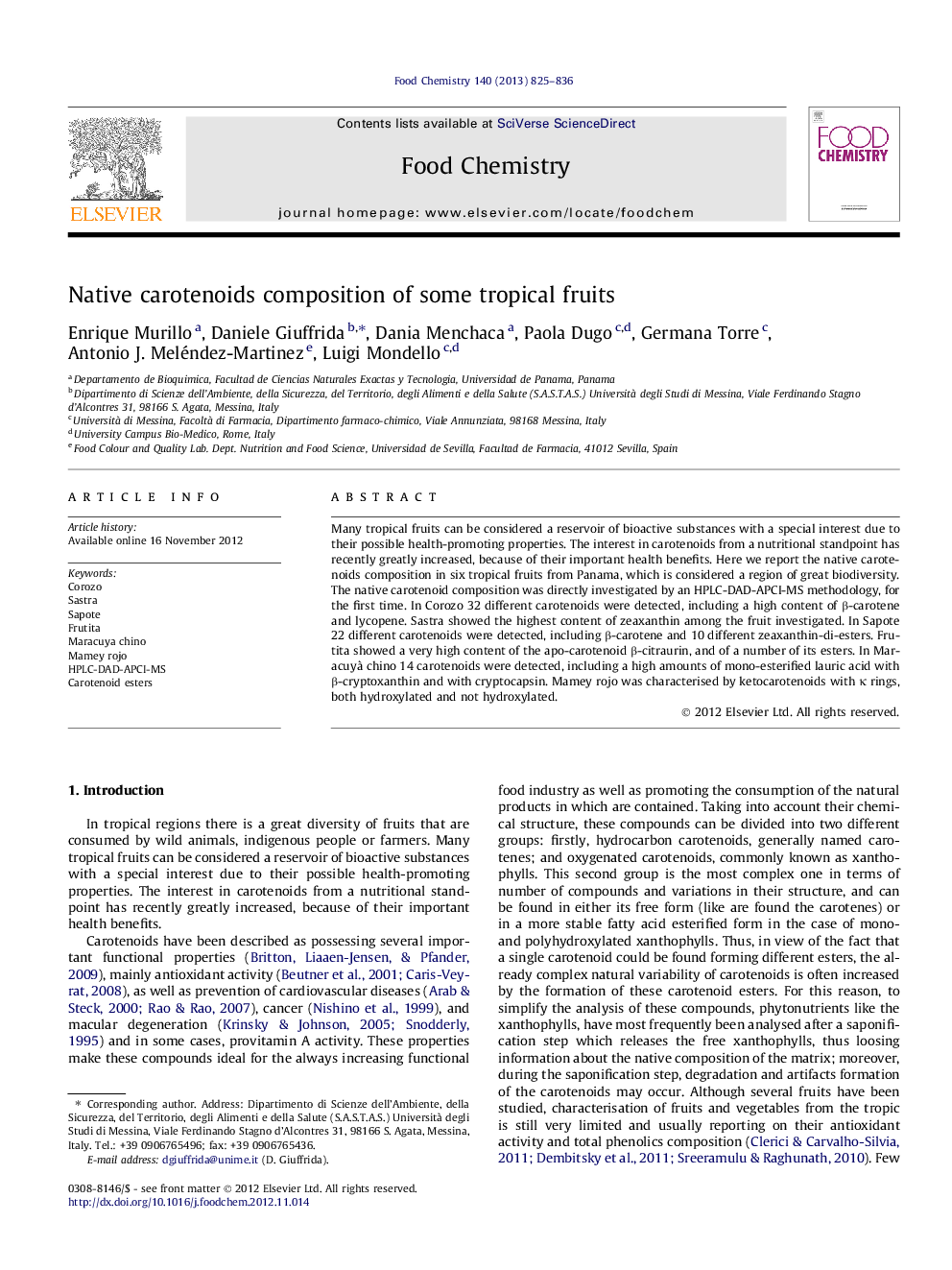| کد مقاله | کد نشریه | سال انتشار | مقاله انگلیسی | نسخه تمام متن |
|---|---|---|---|---|
| 1184870 | 1492150 | 2013 | 12 صفحه PDF | دانلود رایگان |

Many tropical fruits can be considered a reservoir of bioactive substances with a special interest due to their possible health-promoting properties. The interest in carotenoids from a nutritional standpoint has recently greatly increased, because of their important health benefits. Here we report the native carotenoids composition in six tropical fruits from Panama, which is considered a region of great biodiversity. The native carotenoid composition was directly investigated by an HPLC-DAD-APCI-MS methodology, for the first time. In Corozo 32 different carotenoids were detected, including a high content of β-carotene and lycopene. Sastra showed the highest content of zeaxanthin among the fruit investigated. In Sapote 22 different carotenoids were detected, including β-carotene and 10 different zeaxanthin-di-esters. Frutita showed a very high content of the apo-carotenoid β-citraurin, and of a number of its esters. In Maracuyà chino 14 carotenoids were detected, including a high amounts of mono-esterified lauric acid with β-cryptoxanthin and with cryptocapsin. Mamey rojo was characterised by ketocarotenoids with κ rings, both hydroxylated and not hydroxylated.
► Native carotenoids composition in six tropical fruits from Panama.
► HPLC-DAD-APCI-MS methodology.
► Insight into the esterification of xanthophylls.
► Complementary information provided by APCI positive and negative ionisation modes.
► Consumption of these fruits should be promoted because of their phytonutrients.
Journal: Food Chemistry - Volume 140, Issue 4, 15 October 2013, Pages 825–836